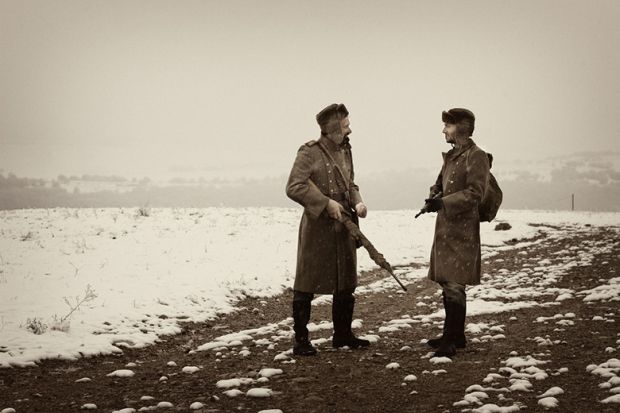Probing a subject that for decades enraged politicians in Moscow and Berlin and fascinated historians from Britain to Australia, Mark Edele’s Stalin’s Defectors is a model of objectivity. During the Second World War, when I was growing up in New York’s Red circles, the perhaps 1.6 million Soviet soldiers who defected were condemned, in Moscow’s words, as “Hitlerite dupes”. While the proportion of defectors was far larger – about 6 per cent – than in other Allied armies, it was not, writes Edele, enormous compared with the great numbers of Soviet soldiers.
The defectors were indeed traitors. Many fought with the Germans, and – as Edele, professor of history at the University of Western Australia, shows – almost one-third fewer Jews would have died in the Holocaust’s extermination camps had Soviet defectors not joined in their slaughter.
The debate on why these men (and apparently not a single woman of the many in the Red Army) went over to the Germans has put forward numerous valid reasons. It has been suggested that they hated Stalin and his regime, came from Russian minorities, such as the Cossacks, hated the “kikes” in official positions, resented collectivisation and, above all, despised Bolshevism.
These contentions are arguable, claims Edele, but none was as significant as exhaustion, near-famine and fear of being killed.
Throughout the war, he contends – basing his meticulous investigation on vast Russian and German documentation and Western scholarship – most Russians, soldiers and civilians, were only tepid supporters of Stalin, despite his propaganda. In the first year of the war, 1941, there was widespread fear that Hitler might win, although, says Edele, the Germans – outmanned, outgunned, out-supplied and far from home – were doomed from the start. Overall, he observes in this closely argued account, the evidence confirms that “defeatism was rife in Soviet society at the war’s start, and that it took a prolonged struggle with a genocidal enemy to bring a growing share of the population firmly behind the political leadership”. Nonetheless, he notes, defections continued in considerable numbers to the war’s end, and while millions enlisted, an equal number dodged military service.
It could be worth a soldier’s life to defect. On the Russian side, if he was found with a German pamphlet urging him to cross over, he was likely to be executed on the spot. Crossing the frontier was dangerous, even if waving something white, because as likely as not the Germans would open fire. Once in German hands, if the defector was identified from his papers as a Jew, execution quickly followed, and conditions in German POW camps for Soviet soldiers were at best atrocious, and often lethal. If defectors were eventually judged acceptable, they were usually viewed with suspicion, although many wore German uniforms and were used not so much against mainline Soviet troops as against partisans – and to kill Jews.
Edele convincingly shows that defection, “motivated in complex ways…led to a variety of outcomes, from death to survival, from withdrawal from the war to collaboration with the worst aspects of German policy”. No surprise, then, that nowadays Russian sources omit any mention of defectors.
Jonathan Mirsky was formerly associate professor of Chinese, history and comparative literature at Dartmouth College.
Stalin’s Defectors: How Red Army Soldiers became Hitler’s Collaborators, 1941-1945
By Mark Edele
Oxford University Press, 224pp, £60.00
ISBN 9780198798156
Published 29 June 2017
POSTSCRIPT:
Print headline: Riddle of the Soviet traitors
Register to continue
Why register?
- Registration is free and only takes a moment
- Once registered, you can read 3 articles a month
- Sign up for our newsletter
Subscribe
Or subscribe for unlimited access to:
- Unlimited access to news, views, insights & reviews
- Digital editions
- Digital access to THE’s university and college rankings analysis
Already registered or a current subscriber?




